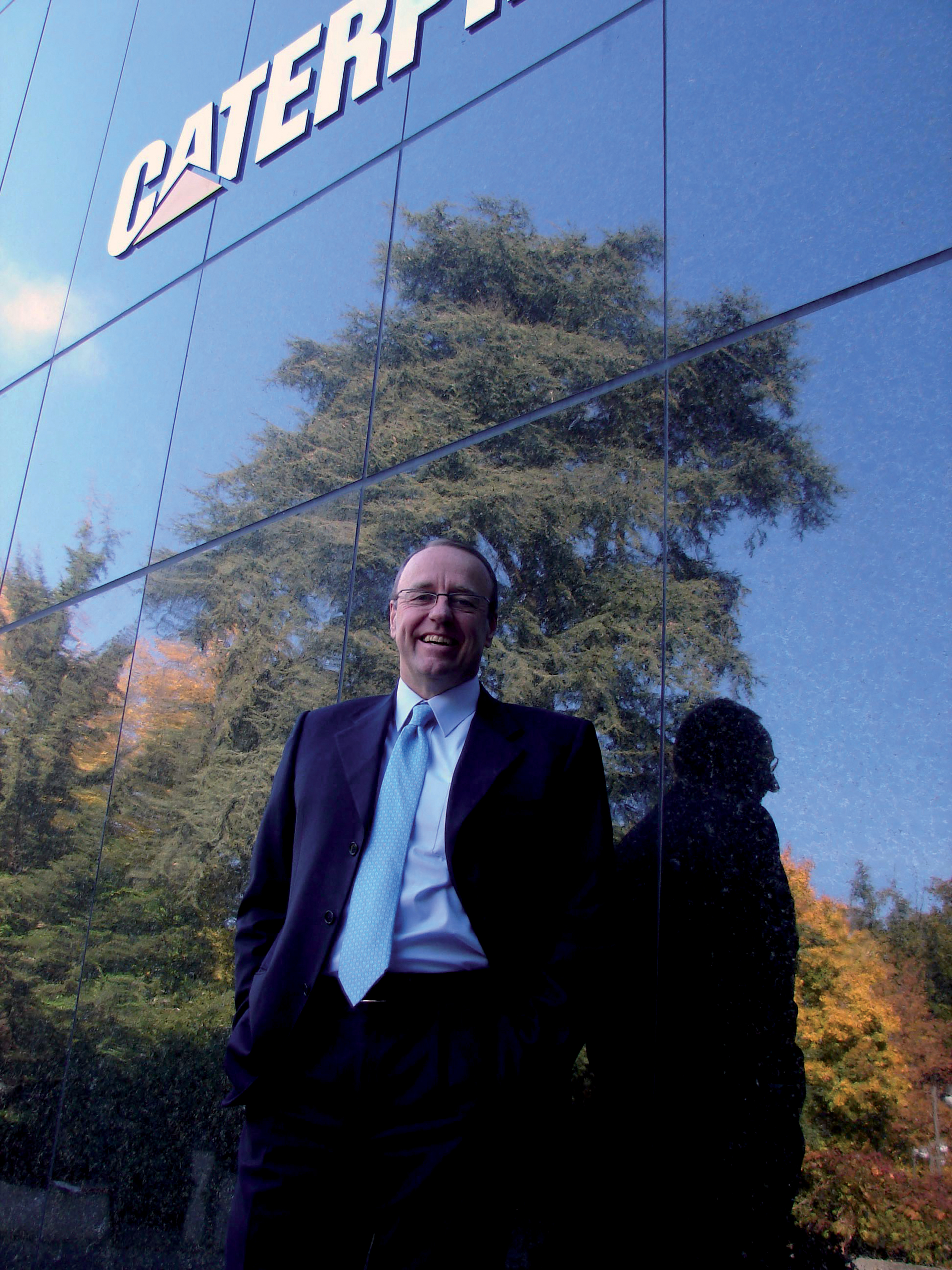
Caterpillar has restructured to focus on customer segments. Claire Symes spoke to industry region manager John Calder to find out what this means for quarry operators
The financial crisis has given many companies the breathing space to take stock of their operations and review what customers really need from them. One of the largest construction equipment businesses to do this has been
For the quarry industry this means a new vice president for quarrying - Bill Springer - who is based in Peoria and regional managers for EAME and CIS, Asia and the Americas. The man charged with heading up the EAME and CIS division is John Calder, under the title of industry region manager for quarry & specialty industries.
Australian-born Calder took on the post at the end of 2008 but is no newcomer to Cat. "I'm a Caterpillar veteran of 24 years and started in Geneva," he explained.
Calder studied economics and accounting at university in Australia and joined Cat after walking into the Geneva office from the street one day and asking for a job." This approach to getting a job with the company sums up Calder's straightforward approach to business. It was his style of business that led him to be at the forefront of establishing Cat's businesses in China and then Russia in the 1990s after spending time in Cat's mining division and in marketing.
New challenge
Before taking on his current post, Calder had spent six years based in Geneva where he was in charge of product support. But at the end of 2008, Cat started to restructure its business and align it with its customers' segment and Calder was asked to lead the EAME and CIS quarry and special industries team.
"I had a reasonable understanding of mining, quarrying and industrial customers from my previous roles in the company," he said. "But there were some significant challenges.
"The current crisis has changed the industry and has been a very challenging time but it has enabled us to reorganise with a clear focus on getting closer to customers than was possible under the previous product focus. We can now offer real customer solutions," he said.
The first hurdle was to get the right team in place and Calder said that most are now in position and his team comprises of 40 people spread across the region.
"It was a balance between corralling the 'wise old lions' to keep experts like Mike Porri in the team and finding the young tigers by identifying the people who can partner with customers," he explained. "The new generation of quarry experts needed to know enough about the sector but be able to travel and get into the quarries.
"It is still early days for customer response but so far it seems to be well received." To explain how Cat is now working more closely with its customers, Calder said that at the time of the interview with ABE, four of his team were working with
"With the industry where it is, not many major customers have capex budgets. They are being frugal this year and investment will probably be at a low level next year too.
But we are sowing seeds for the future.
"The downturn has driven the sector back to basics - no one will accept a quick solution anymore, people want reliability. Customers want a partner who is there for the good, bad and the ugly. We are currently in the 'ugly' stage but we are emerging - we hope to see light at the end of the tunnel at the end of the fourth quarter."
Understanding
According to Calder, it is important for Cat to understand who its customers are and what they want.
"In the past quarry and aggregate customers had access to cash flow so could finance themselves," he said. "Now we are seeing a trend where cash is king and large operators through to small quarries are trying to conserve cash. This has triggered a growing requirement for long term - seven to eight year - leases and rental. This is similar to the business model in the mining sector and we can see some synergies.
"Customers want to share the risk and Cat is well positioned to help customers get through this period." Calder said that another essential part of his team's role is to deliver products.
"We are watching some industry trends and looking to right size our products to match the move by some operators to larger equipment," he added. "The other trend we are watching in the sector is the move to in-pit crushing with mobile equipment from fixed crushing and screening, which influences the loading and hauling equipment needed." In terms of products, a lot of development is underway and Calder said that Cat is likely to be showcasing five new products for the quarrying and aggregates market at
Nonetheless, he did not reveal any details about the developments other than adding that they will offer major enhancements in productivity and fuel efficiency.
"Through the new organisation we are quicker to respond in upgrading and product development," said Calder. "We currently have three updates that started with customer conversations that have been brought to the market for testing within 90 days. Customers can clearly see the reaction.
"Reorganisation at a time of crisis gives the time to reflect on need and drive the changes through." Calder had recently visited Cat's Leicester factory that builds small wheeled loaders and backhoes and said that there had been significant changes in the last six months with alterations to the layout and implementation of automotive approaches to production.
"Research and development has doubled to US$1.7billion and capex in factories was US$2.5billion and we have continued that in 2009," he said. "This sends a strong message to customers of our future confidence.
"We can never claim victory on quality but we are quietly confident of our offering." "Machines used in quarrying and aggregates are not placed in easy work environments and something will always go wrong but it is the speed of response that is the key," said Calder. "This crisis will shake up suppliers.
"Cat is aiming not to lose focus on product support. Our dealers have 130,000 employees worldwide and 80% of those are technicians and these have not been cut back. The network we have today has been built over 80 years."
Forecast
"The next nine months will be a challenging period for the industry and customers," said Calder. "There is a fine balance between cash and investing for the future.
"Our role is to work on developing creative solutions to make the best use of limited capex and get the most out of existing fleets. This will be through a combination of new investment, rental and lease or rebuild." According to Calder, dealers will play a key part in helping customers reduce costs. "Dealers are working to help customers go back to basics by offering maintenance seminars and helping to ensure they have correctly equipped machines," he said.
"There are gains to be made from having the right ground engaging tools to get the best productivity. Also learning to operate the machine in the most fuel efficient manner with our eco-drive training can improve fuel efficiency by as much as 30% - far more significant than the 3-5% possible through improved machine design.
"There is a huge appetite for support and we are harnessing dealer resources.
It has been a challenge to reinvigorate the knowledge that has always existed within Cat but to use it more efficiently."










